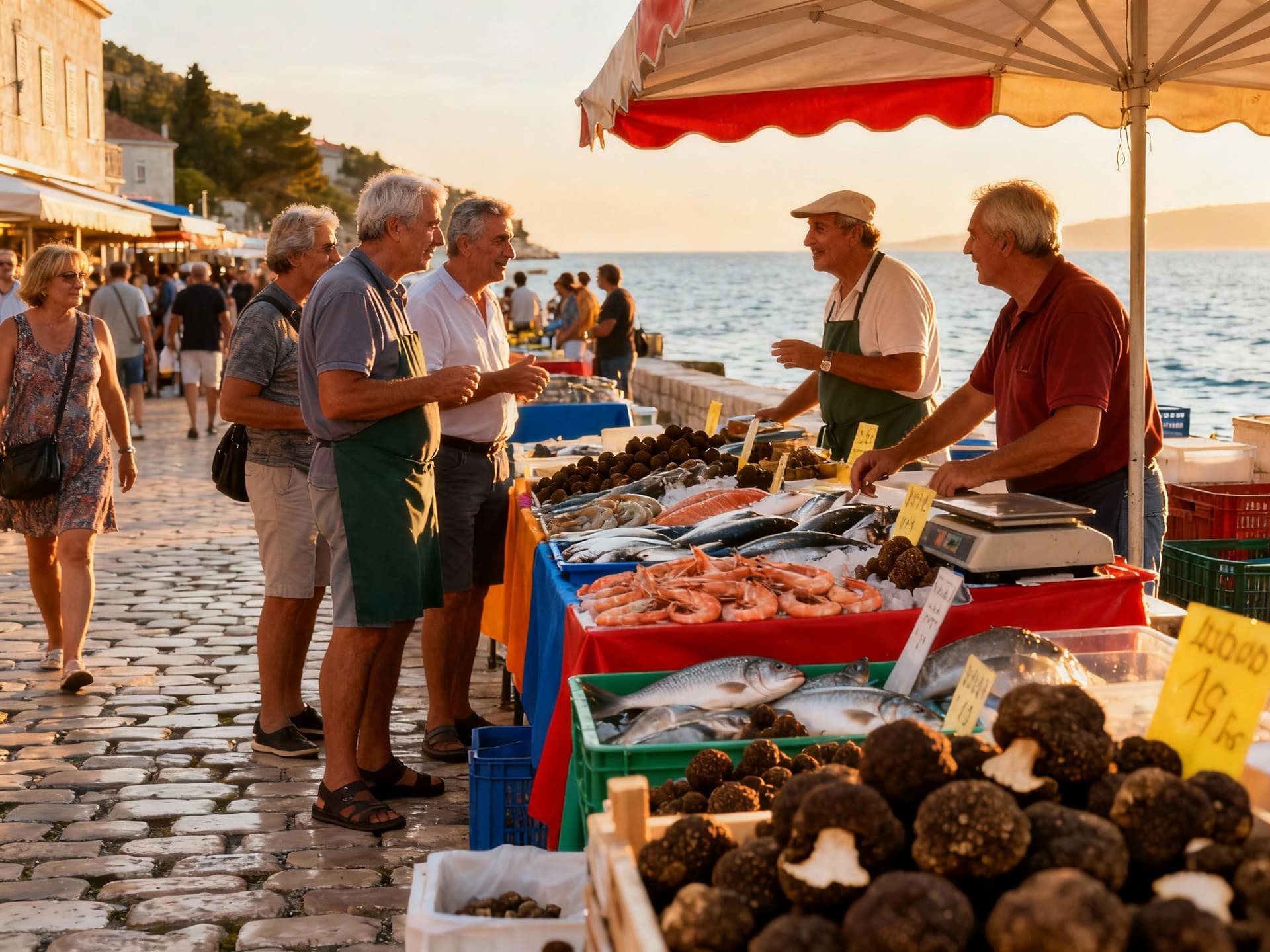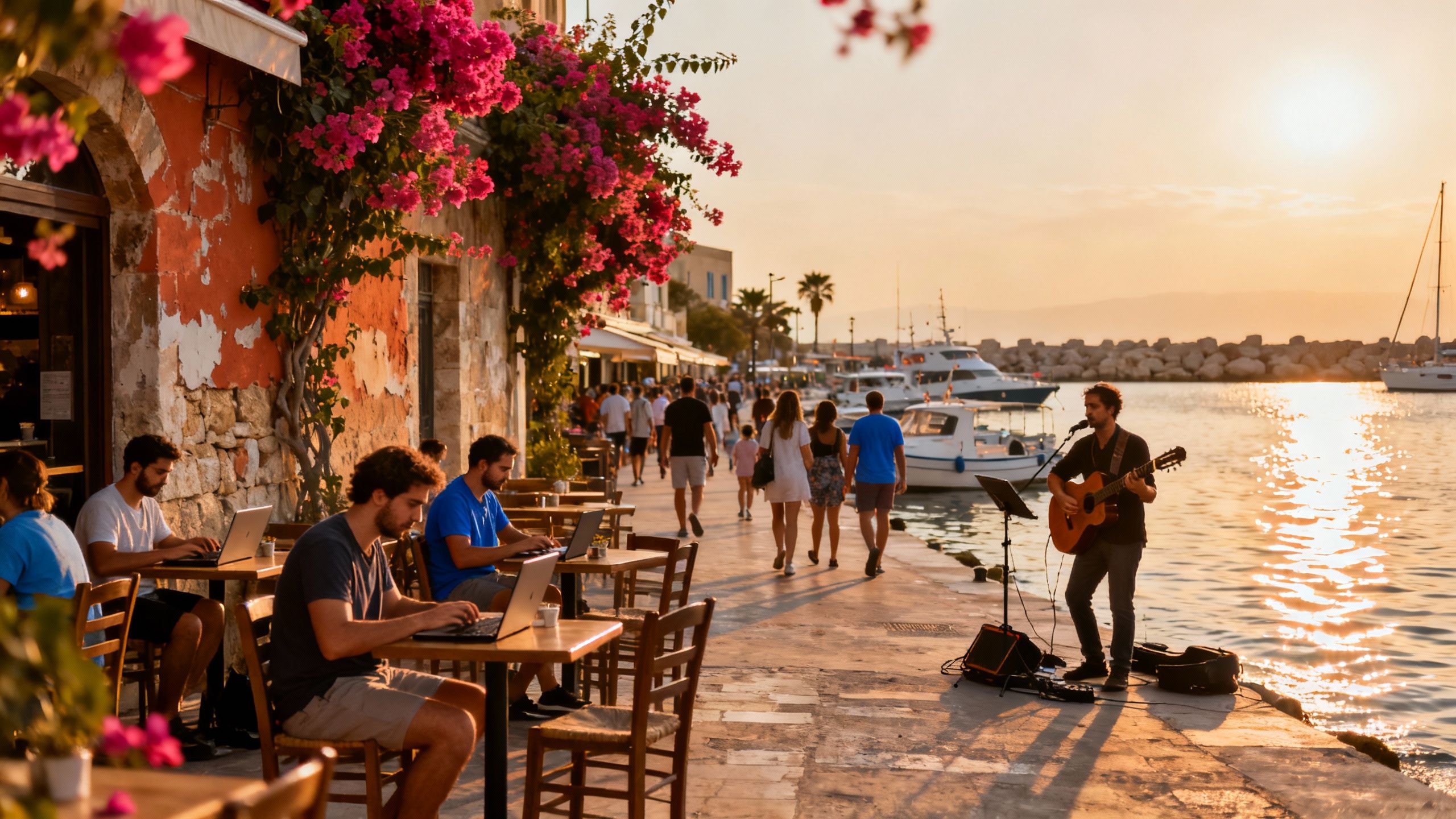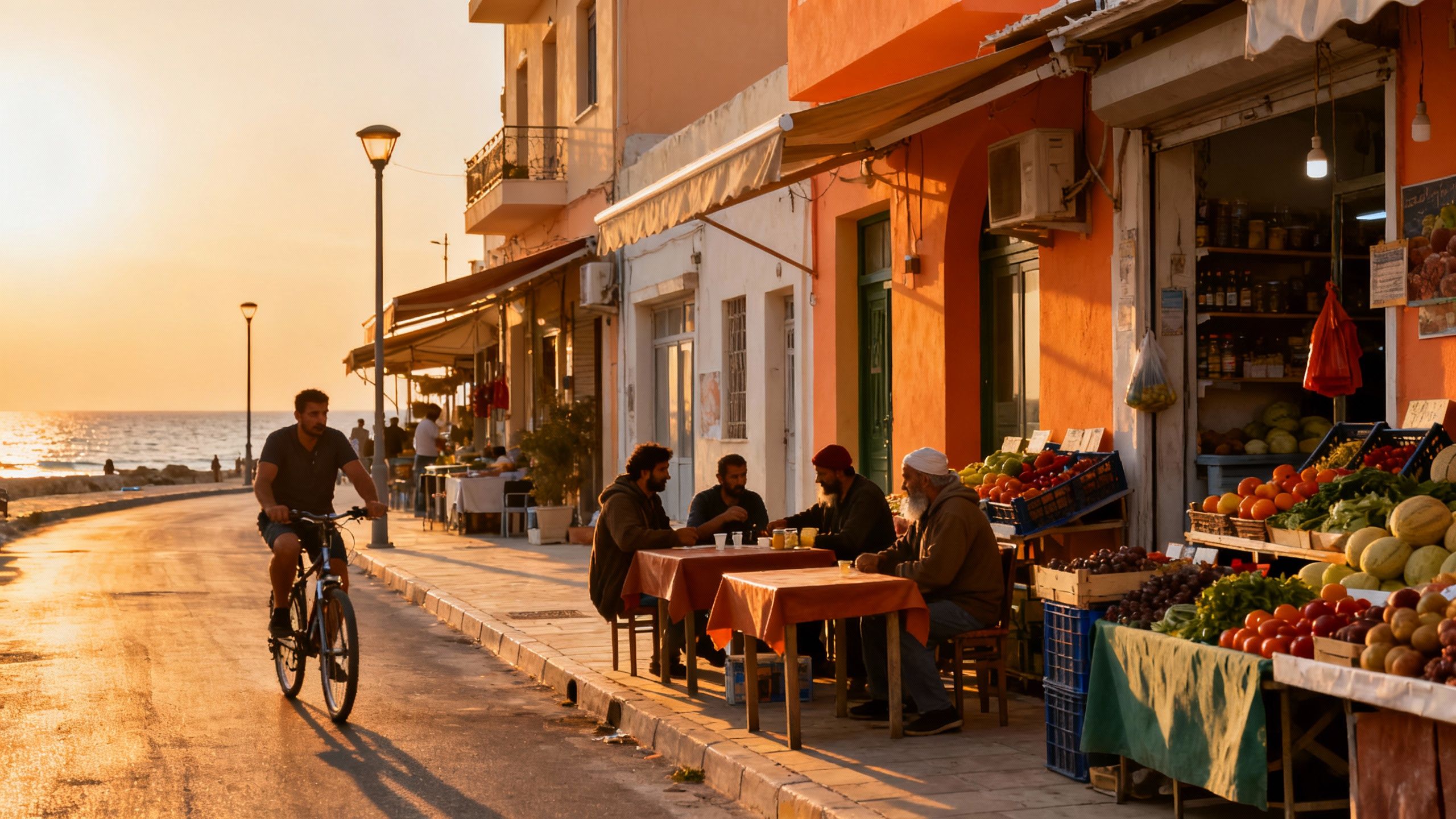Croatia Budget Truths: Where Costs Hide — and Where They Don’t
Fall in love with Croatia’s cafes, coast and coworking — but budget like a local: factor regional price gaps, seasonal costs, and changing tax rules into your plan.
Imagine sipping an espresso on Zagreb’s Tkalčićeva, then hopping a bus to a seaside lunch in Split — Croatia blends slow Mediterranean days with sharp city energy. For nomads and remote workers the dream is clear: cobbled streets, coastal swims between calls, and cafes with reliable Wi‑Fi. But here’s the catch most travel photos skip: your budget has a local geography. Where you choose to plant your laptop matters as much as the view.
Living Croatia: more than coast, more than cliché

Life in Croatia moves with seasons. Summer pulses along the Adriatic — late breakfasts, seafood grills, tourist energy — while inland weekdays hum with students, markets and creative coworking scenes. Picture morning markets in Dolac (Zagreb) and evening aperitifs on Split’s Riva: both feel attainable if you budget with place in mind. That’s the lifestyle-first truth: you can live an Adriatic life without the Dubrovnik price tag, if you know where to look.
Zagreb neighborhoods that feel like home
Zagreb blends leafy streets and cafe culture. Gornji Grad (Upper Town) is history and quiet mornings; Donji Grad and around Trg bana Jelačić pulse with restaurants and tram links; Trešnjevka offers more affordable flats and a local vibe. For nomads who need coworking and fast fibre, areas near Savska and Donji Grad put you a ten‑minute walk from hubs like HUB385 and Impact Hub.
Coastline tradeoffs: Split, Rovinj, Dubrovnik
The coast is intoxicating — early swims, fish markets, island hops — but also seasonal. Split’s Veli Varos and Bačvice give that daily sea breeze with cafés and bakeries; Rovinj’s old town is romantic and smaller; Dubrovnik is stunning but famously expensive. If you crave seaside life with coworking and community, look to Split and parts of Istria where prices and long‑term rental availability feel more balanced.
- Lifestyle highlights to compare when budgeting
- Morning market run at Dolac (Zagreb)
- Coworking day at HUB385 or Wespa Spaces (Zagreb)
- Island ferry day from Split to Hvar or Brač
- Weekend foodie hunt in Motovun and Istrian truffle spots
Making the move: realistic budgeting steps

The market is shifting fast: Croatia’s official price index shows double‑digit annual rises in many regions, and policymaker moves to tax empty and short‑term rental properties are changing the landscape. That means your initial budget needs buffers — for purchase, seasonal running costs, and the reality that coastal listings spike in summer demand.
Property styles and what they cost you to live
Apartments in Zagreb and coastal towns command the highest prices per square metre; interior towns and smaller inland villages are far cheaper. New builds often cost more upfront but can mean lower renovation bills and modern insulation — important if you plan winter stays. Old stone homes on islands are dreamy but often require wiring, roof and humidity fixes that add to your realistic budget.
Work and connectivity: factor this into monthly costs
Don’t assume every pretty piazza has reliable upload speed. Budget for fibre or a coworking membership if remote work matters — coworking desks in Zagreb can range from budget monthly passes to premium hubs. For island or rural buys, check wired internet availability before you sign; satellite or mobile hotspot months can add unexpected costs.
- Step-by-step initial budgeting checklist
- Estimate purchase price + 10–15% buffer for taxes, notary and agency fees.
- Add renovation and adaptation costs (older stone houses: budget 10–30% of purchase).
- Factor 6–12 months of living costs if you’re moving: rent, utilities, travel, visas.
- Plan for yearly property taxes or new levies; follow legislation affecting short‑term lets.
Insider knowledge: expat mistakes and contrarian tips
Here’s what expats wish someone told them: don’t equate seaside photos with affordable living, and don’t skip a local‑language notary review. Many buyers fall for summer listing glamour — a terrace with sea spray — then discover seasonal noise, tourist rents, and higher maintenance. The contrarian play? Buy inland or in secondary coastal towns that locals choose for year‑round life, not just for holiday rentals.
The neighbourhood locals quietly recommend
Ask Croatian friends where THEY would live long term. Often the answer points to neighbourhoods off the brochure maps — affordable zones near good schools, reliable transport and local bakeries. For instance, Sesvete (Zagreb periphery) offers lower square‑metre prices while still leaving you within commuting distance to central coworking. On the coast, look for small ports and fishing towns with year‑round communities rather than tourist hotspots.
Red flags that drain your budget
- Property with unclear ownership history or missing permits — can trigger long legal costs.
- Relying on summer rental income to cover mortgage — seasonal markets fluctuate and legislation is shifting.
- Buying on holiday impulse without a multi‑season visit — winter reveals insulation, heating and access issues.
Work with a local agency that lives your lifestyle brief. Tell them: I need fibre, a quiet workspace, and a neighbourhood with year‑round community. Good agents will show you opposite sides of the same coast: tourist hotspots and quieter streets where locals actually live. They’ll also help with non‑EU purchase permissions, tax timing and realistic renovation quotes.
Permissions and paperwork you’ll meet
EU citizens generally enjoy the same buying rights as Croatians. Non‑EU buyers usually need approval from the Ministry of Justice or relevant local authorities — a process your notary or agency will start. Always verify ownership via the land registry and ask for recent utility and building permits before you transfer funds.
- Practical next steps to translate love into a liveable budget
- 1) Visit off‑season (late autumn/winter) to test commute, noise and heating.
- 2) Get a written renovation estimate from local builders before bidding.
- 3) Lock a local agency who specializes in buyer advocacy and remote‑work needs.
- 4) Build a 15% contingency into closing costs and one year of living expenses into your initial capital.
Croatia can be both an everyday home and an extraordinary backdrop for work‑life freedom. The trick is to budget like a local: balance the seaside romance with inland realism, plan for seasonal costs, and let a trusted local agency guide legal and technical checks. Do that, and the plate of grilled fish and the early morning Adriatic swim stop being a holiday fantasy and start being your weekday routine.
British expat who moved from Manchester to Mallorca in 2017. Specializes in market analysis and helping fellow Brit navigate local regulations.


